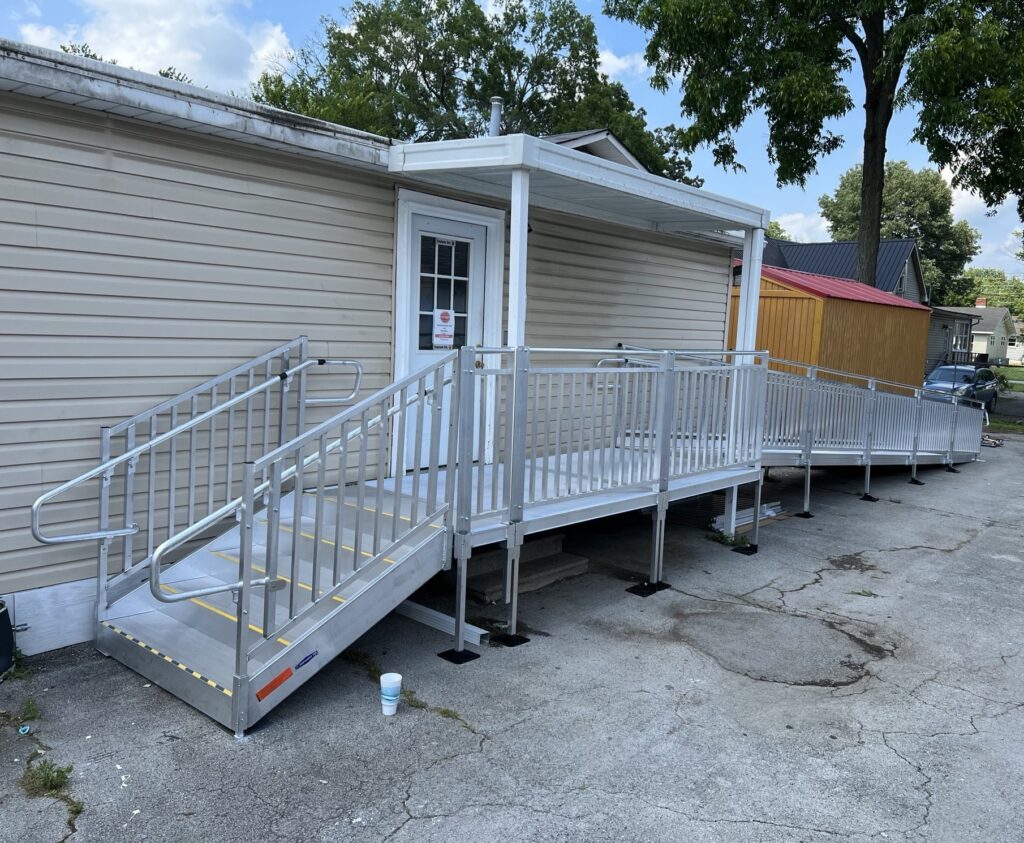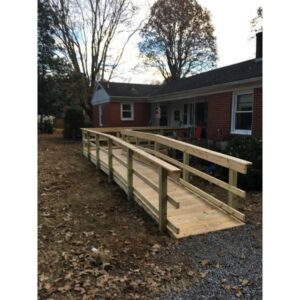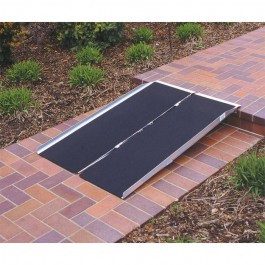
Picture a world where the boundaries of mobility are shattered, where individuals with physical disabilities can navigate their homes with the same freedom and independence as anyone else. In this world, a simple yet profound solution exists – the wheelchair ramp. A wheelchair ramp is not just a practical addition to a home; it is a gateway to a life of increased mobility and an embodiment of inclusivity.
Designed to provide a seamless transition between spaces, wheelchair ramps are a game-changer for individuals who rely on rolling walkers, wheelchairs, or mobility scooters. They offer an additional mobility aid that opens up a world of possibilities, allowing your loved ones to move around their homes effortlessly and independently. Whether it’s accessing different rooms, entering or exiting the house, or enjoying the outdoor areas, a wheelchair ramp serves as a crucial link that bridges the gap between restricted mobility and newfound freedom.
In this blog, we will explore the options available when choosing a ramp, determining the length, material, and installation process for personal use, and the specific requirements for an Americans with Disabilities Act (ADA) approved ramp.
Material
When determining the most suitable type of wheelchair ramp for your needs, it is crucial to carefully consider the available material options and weigh their respective benefits and drawbacks. Two commonly used materials are aluminum and wood, each offering distinct characteristics.
 Aluminum ramps possess several notable advantages, making them a popular choice for many individuals. One key upside is their exceptional durability. Unlike wood, aluminum is resistant to rust and corrosion, ensuring a long-lasting and low-maintenance solution. The installation process is quick and straightforward, often requiring only 1-2 hours. Moreover, aluminum ramps can be easily relocated or expanded to accommodate future needs, providing flexibility and adaptability. Minimal maintenance is necessary, with periodic cleaning and clearing of outdoor debris such as snow or leaves. An additional benefit is that aluminum ramps hold great resale value, making them a wise investment for those who may no longer require them in the future or wish to upgrade to a different model.
Aluminum ramps possess several notable advantages, making them a popular choice for many individuals. One key upside is their exceptional durability. Unlike wood, aluminum is resistant to rust and corrosion, ensuring a long-lasting and low-maintenance solution. The installation process is quick and straightforward, often requiring only 1-2 hours. Moreover, aluminum ramps can be easily relocated or expanded to accommodate future needs, providing flexibility and adaptability. Minimal maintenance is necessary, with periodic cleaning and clearing of outdoor debris such as snow or leaves. An additional benefit is that aluminum ramps hold great resale value, making them a wise investment for those who may no longer require them in the future or wish to upgrade to a different model.

On the other hand, wood ramps require more frequent upkeep compared to their aluminum counterparts. Proper cleaning and resealing are essential to prevent rot and decay, ensuring the longevity of the ramp. Over time, even with excellent maintenance, wood is prone to warping and may eventually require replacement. Furthermore, due to their permanent installation, wood ramps typically necessitate obtaining a building permit, adding an extra step to the process. The labor involved in constructing a wood ramp is generally more extensive than that of an aluminum ramp.
In recent times, the rising cost of wood, combined with the ongoing maintenance expenses, can make wood ramps less cost-effective when compared to aluminum alternatives. It’s also worth noting that because wood ramps are permanent structures, they cannot be relocated, and they hold no resale value. This may be a drawback for future homeowners who might incur costs to have the ramp removed if it no longer suits their needs.
Design
For mobility scooter users, the slope capabilities may differ. Check your mobility scooter’s owner’s manual for the maximum slope it can handle. When in doubt, it is always advisable to follow the ADA guidelines for optimal safety and accessibility.
Installation
To help you identify how much space you will need to install a ramp, use our ramp calculator. There are a couple of other considerations to keep in mind as well.

When you work with All-Star Medical to choose a wheelchair ramp, you have the benefit of working with one source from start to finish. We will assess your property and needs, measure, order, and install your ramp. Installation can vary based on material, type, and location but All-Star Medical will typically install within a week of assessment, whether it be at a residence or business. All-Star Medical also carries car ramps, and folding, portable ramps for sale or rent.
Don’t risk your safety or investment by doing it alone or following a DIY video online. Get the safety and assurance of working with a professional company to have the correct wheelchair ramp installed right the first time.
For a complete list of ADA ramp requirements and specifications visit: https://www.ada-compliance.com/ada-compliance/ada-ramp
3520A Central Pike
Hermitage, TN 37076
615-730-9438
332 Southgate Ct
Brentwood TN 37027
615-567-6116
Monday-Friday: 9am-5pm
Saturday & Sunday: Closed
3520A Central Pike
Hermitage, TN 37076
615-730-9438
332 Southgate Ct
Brentwood TN 37027
615-567-6116
Monday-Friday: 9am-5pm
Saturday & Sunday: Closed
Notifications